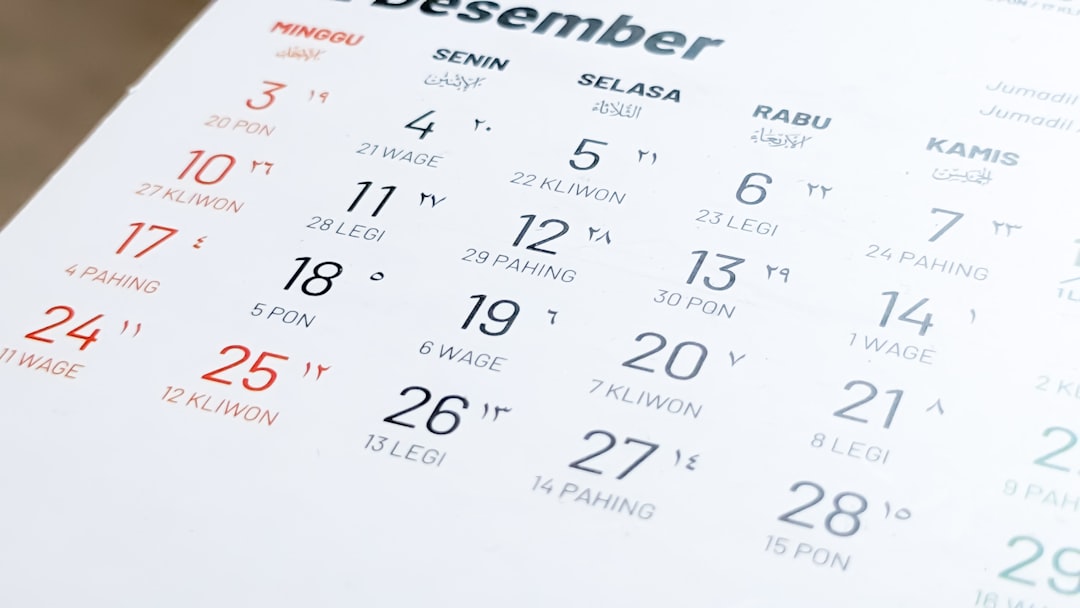Mastering Your Productivity: The Power of Data Scheduling
In today’s fast-paced and highly competitive world, staying organized and efficient is no longer a luxury—it’s a necessity. Between work, personal commitments, and countless daily tasks, it’s easy to feel overwhelmed. That’s where data scheduling comes in as a game-changer. Whether you’re a busy professional managing multiple projects, a student balancing academics with extracurricular activities, or simply someone who wants to make the most of every hour, data scheduling can revolutionize how you organize your life.
What is Data Scheduling?
Data scheduling refers to the process of systematically organizing and planning your tasks, deadlines, and commitments in a structured format. This could involve using digital tools like scheduling apps, calendar software, or project management platforms, or even traditional pen-and-paper planners. The goal is simple: to create clarity, improve efficiency, and help you prioritize what matters most.
Unlike basic to-do lists, data scheduling goes a step further by allowing you to allocate specific time slots for each task, set reminders, and track your progress over time. This proactive approach reduces uncertainty and ensures that nothing falls through the cracks.
Why Data Scheduling Matters
-
Enhanced Productivity
When you have a clear roadmap for your day, you waste less time deciding what to do next. Data scheduling eliminates guesswork and helps you jump straight into action. -
Better Time Allocation
Not all tasks are equal. Data scheduling enables you to identify high-priority tasks and allocate the right amount of time to them, ensuring you stay focused on what truly matters. -
Stress Reduction
Overwhelm often comes from not knowing where to start. Having a structured plan reduces anxiety, making your workload feel manageable and achievable. -
Accountability and Progress Tracking
Scheduled tasks provide a sense of accountability. Plus, tracking your progress helps you stay motivated and identify areas for improvement.
How to Get Started with Data Scheduling
Starting with data scheduling doesn’t have to be complicated. Here’s a simple approach:
Step 1: Choose Your Tools
-
Digital Options: Google Calendar, Microsoft Outlook, Trello, Notion, or Asana.
-
Traditional Options: A planner, journal, or printable scheduling templates.
Step 2: Break Down Your Tasks
Divide large projects into smaller, actionable steps. For example:
-
Instead of writing “Complete Project,” break it down into:
-
Research topic
-
Create outline
-
Draft first section
-
Review and edit
-
Step 3: Assign Time Blocks
Allocate specific time slots for each task. For example:
-
9:00 AM – 10:30 AM: Write blog post
-
11:00 AM – 12:00 PM: Respond to emails
-
2:00 PM – 3:30 PM: Client calls
Step 4: Set Reminders
Use app notifications or alarms to ensure you never miss a deadline or meeting.
Step 5: Review and Adjust
At the end of the day or week, review your schedule. Did you complete your tasks? Were your time estimates accurate? Adjust for future planning.
Pro Tips for Effective Data Scheduling
-
Batch Similar Tasks: Group tasks like email responses or social media updates together to save time and increase focus.
-
Prioritize with the 80/20 Rule: Focus on the 20% of tasks that deliver 80% of results.
-
Leave Buffer Time: Life is unpredictable. Always leave extra time between tasks to handle interruptions or unexpected issues.
-
Use Color Coding: Assign colors to categories (work, personal, meetings) for quick visualization.
Benefits Beyond Time Management
Data scheduling isn’t just about managing time—it’s about improving your overall quality of life. Here’s why:
-
Reduces Decision Fatigue: Fewer daily decisions mean more mental energy for important tasks.
-
Improves Work-Life Balance: When everything is scheduled, you can plan for leisure and relaxation too.
-
Boosts Confidence: Meeting deadlines and achieving goals consistently builds self-confidence and motivation.
Popular Tools for Data Scheduling
-
Google Calendar: Free and integrates with almost everything.
-
Trello: Great for visual project management.
-
Notion: Combines notes, tasks, and databases.
-
Todoist: Simple and effective for personal use.
Start Small, Think Big
If data scheduling feels overwhelming, start small. Begin by planning your day, then move to weekly, monthly, and even yearly schedules as you gain confidence. Over time, you’ll notice significant improvements in how much you accomplish and how in control you feel.
Final Thoughts
Embrace the power of data scheduling and take charge of your time. Say goodbye to missed deadlines, unnecessary stress, and last-minute chaos. Instead, welcome a life of structure, clarity, and productivity. The journey to a more organized and fulfilling life starts with one simple step: schedule your time wisely.
